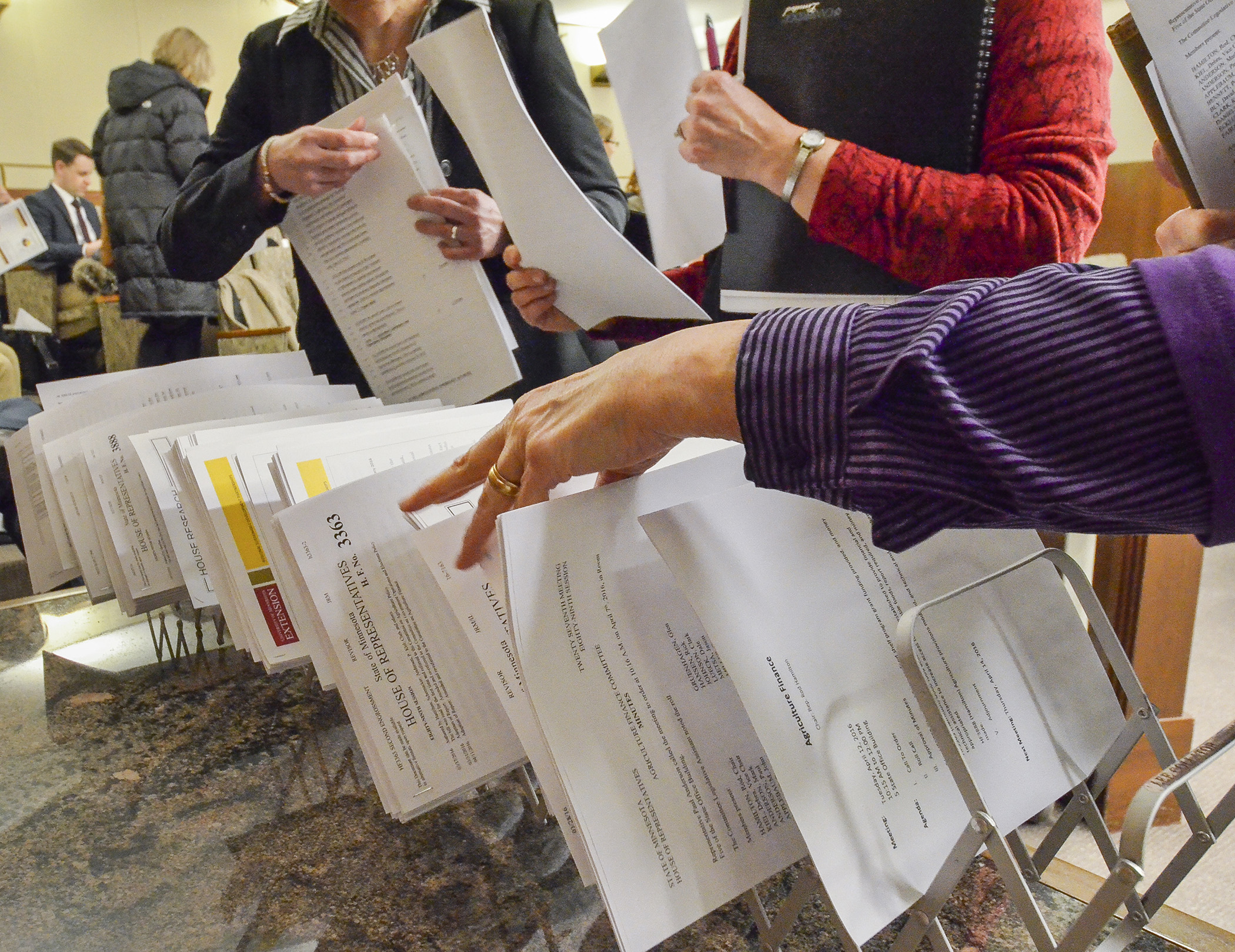State’s response to ag-related emergencies is the goal of funding bill

Last year’s avian influenza outbreak was a wakeup call for Minnesota poultry producers, and the state’s need to be better prepared for the next agricultural emergency.
“(The avian flu outbreak) was a devastating time. But it was refreshing to see everyone come together last session to address it,” said chair of the House Agriculture Finance Committee Rep. Rod Hamilton (R-Mountain Lake) Tuesday.
He said this year’s omnibus agriculture finance bill, HF3888, which he sponsors, will help the state maintain its momentum as a national leader in its response to agriculture disease outbreaks. The bill was laid over, as amended, until Thursday when a vote is expected after more public testimony. The bill has no Senate companion.
The funding bill would shift $9.81 million in existing avian flu funding. Of that amount, the bill calls for $7.8 million in new spending on laboratory equipment and other improvements that would boost the state’s ability to respond to agriculture emergencies, especially disease outbreaks like avian flu.
The proposed spending includes:
- $3.3 million in an agriculture emergency fund the bill would establish;
- $2.2 million for new equipment and instruments for the Department of Agriculture’s laboratory, a provision in Gov. Mark Dayton’s capital improvement request;
- $1.8 million for the University of Minnesota to develop a software tool to help veterinarians and producers better understand, monitor and implement security against unique pathogen strains that affect poultry and livestock; and
- $283,000 for the university to purchase new Veterinary Diagnostic Laboratory equipment to increase animal disease testing capacity; and
- $250,000 to establish the tractor rollover protection pilot program, which would cover up to 70 percent of costs of buying, shipping and installing roll bars on tractors. The program is meant to reduce the chances of a serious or fatal injury in an accident.
The proposal also includes broadening some funds appropriated in the 2015 funding law to address all agricultural emergency response issues and related costs, including fighting diseases affecting livestock and crops. This includes $20 million from the Department of Safety’s Disaster Assistance Contingency funds, which the Legislature allowed to be used for fighting avian flu in 2015, plus $1.9 million in shifted funds. Hamilton said the availability of these funds would be further detailed Thursday.
Of the money that would be shifted back to the General Fund and subsequently redistributed, $6.7 million in avian flu funding would come from a special Rural Finance Authority fund, which is separate from the program’s regular funds.
The Legislature allocated $10 million to the authority in 2015 to help producers finance avian-flu-related improvements. The special fund would still have approximately $2 million left after the transfer, which is more than was spent from the fund during the outbreak.
WATCH Discussion of the bill on YouTube
Rep. David Bly (DFL-Northfield) said he supports broader response funding in the event a different kind of outbreak struck the state, such as livestock or crop disease. But he expressed concern about modifying avian flu funds in case the disease reemerges this year.
Hamilton said the available funds, especially the proposed $20 million, would still allow the state to rapidly respond to an outbreak, adding the difference would simply allow the state to also respond to different types of outbreaks.
What else would HF3888 do?
- add certain contaminant removal projects for private wells to the eligible projects under the Agriculture Best Management Practices Loan Program;
- require people and companies that register nonagricultural pesticides with the Department of Agriculture to pay the gross sales fee only on that portion of their sales that exceed $70,000;
- add technical language to the state’s various bioeconomy grant programs, including various definitions, which were lost when the NextGen Energy Board legislation expired in 2015. Calculation production requirements for the grants would be done on a quarterly basis instead of annually;
- modify eligibility for the advisory board for the Agriculture Research, Education, Extension and Technology Transfer Board by allowing members appointed from stakeholder organizations to be selected by the organizations and removing the University of Minnesota spot due to potential conflict of interest concerns;
- expand eligibility for the Advanced Biofuel Production Incentive Program to include producers of biobutanol;
- transfer $600,000 appropriated last session for agricultural rapid response to the University of Minnesota Experiment Station; and
- extend availability of various Agriculture Research, Education, Extension and Technology Transfer Grant Program grants by several years, including making food hub funds available through Fiscal Year 2017.
What’s in the bill?
The following are selected bills that have been incorporated in part or in whole into the omnibus agriculture finance bill:
Related Articles
Search Session Daily
Advanced Search OptionsPriority Dailies
Ways and Means Committee OKs proposed $512 million supplemental budget on party-line vote
By Mike Cook Meeting more needs or fiscal irresponsibility is one way to sum up the differences among the two parties on a supplemental spending package a year after a $72 billion state budg...
Meeting more needs or fiscal irresponsibility is one way to sum up the differences among the two parties on a supplemental spending package a year after a $72 billion state budg...
Minnesota’s projected budget surplus balloons to $3.7 billion, but fiscal pressure still looms
By Rob Hubbard Just as Minnesota has experienced a warmer winter than usual, so has the state’s budget outlook warmed over the past few months.
On Thursday, Minnesota Management and Budget...
Just as Minnesota has experienced a warmer winter than usual, so has the state’s budget outlook warmed over the past few months.
On Thursday, Minnesota Management and Budget...